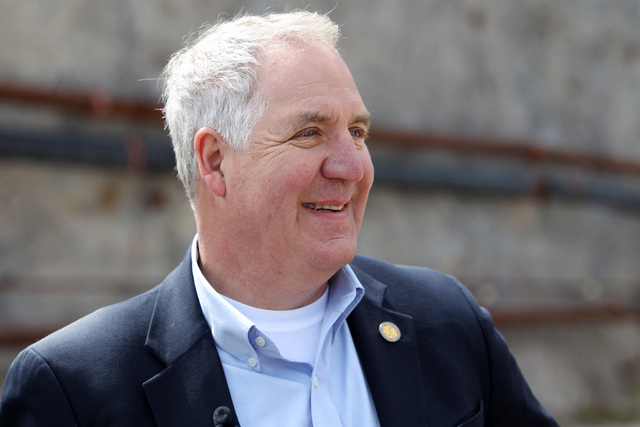
Nevada Gov. Brian Sandoval and former Nevada Sen. and Gov. Richard Bryan co-signed an op-ed earlier this month dismissing the remarkable scientific evidence in support of the Yucca Mountain Project (“Unsafe site won’t ever be safe for nuclear waste,” April 12 Review-Journal).
The reality is it took more than 30 years and $15 billion before world-class scientists from the U.S. Department of Energy, the Nuclear Regulatory Commission and national laboratories and universities (including Nevada schools) were satisfied with their research to answer the fundamental question in the Yucca Mountain debate: Could this remote mountain — an invaluable national asset on a restricted plot of federal land bigger than the entire state of Rhode Island, surrounded by sparsely populated desert next to a former nuclear weapons test site — be used to safely and permanently secure our nation’s spent nuclear fuel and defense waste?
The NRC’s answer, detailed in a nearly 2,000-page, five-volume Safety Evaluation Report finalized in January 2015, is “yes.” Just as important as the finding that Yucca Mountain could meet all safety requirements for no less than a million years are the scientific methods used to reach that conclusion.
Even before a gigantic drill burst through what is now the south portal of the mountain’s 5-mile exploratory tunnel to the cheers of workers at the facility, the goal of the federal government’s scientific and technical review was to prove or disprove a simple hypothesis: Could Yucca Mountain serve as a safe and permanent repository for radioactive material? Neither the independent scientists nor the professionals from the Energy Department and the NRC, who worked for decades to answer that question, stood to gain or lose anything based on their objective analysis.
Decades before that independent safety evaluation was completed, however, politicians opposed to the project funded their own studies and paid their own experts to show the Yucca Mountain site was unsafe. These analysts sought to advance the preferred political narrative of the day, rather than unbiased scientific study to prove or disprove a hypothesis.
Their efforts were unsuccessful. Rather than show Yucca Mountain is unworkable, the evolution in siting criteria has actually improved upon the original designs for the project. Specific “engineering fixes,” as Gov. Sandoval derides them, reduced the already negligible risk associated with permanent geologic storage — the world standard in nuclear waste management — well beyond the original safety assessment.
For example: Under the enhanced design, the maximum potential annual exposure to radiation from materials deposited in the facility would be less than 1 percent of what a Nevadan experiences standing outside on a sunny day.
Additionally, the Energy Department considered the safety of Yucca Mountain in a wide variety of extremely low-probability occurrences — including volcanic activity, massive ecosystem change and seismic activity. The NRC’s evaluation concluded the facility would safely perform in any of those one-in-a-million possibilities.
If Nevada becomes a willing partner with the federal government to host a permanent repository, the state would benefit from the return of thousands of high-paying jobs and infrastructure projects necessary to move the shipments of spent fuel and defense materials to the mountain without intersecting population centers. Some financial benefits and the opportunity to negotiate benefit agreements are already law.
Nevada would also benefit from other advantages associated with host communities, such as increased local and state tax revenue and an emphasis on high-quality educational programs.
Another benefit, federal funds for local communities to monitor for environmental effects, has previously been paid to Nye County and surrounding counties.
These funds allow those closest to the project to actively participate in the debate and continued study of the site. Beyond these established benefits, I’ve also personally offered to discuss additional benefits with state, local and tribal leaders — including financial, infrastructure, transportation and resource requests.
Work remains to move forward with the Yucca Mountain Project. The NRC is still working to complete an additional environmental impact study and, once resumed, adjudication of the licensing process will take several years. As the debate moves forward, it’s clear that science can no longer be used to justify opposition to the project.
We need to complete the licensing process at the NRC to determine, after 30 years and $15 billion, whether Yucca Mountain can serve as a valuable national asset.
Rep. John Shimkus, R-Ill., is chairman of the House Energy and Commerce environment and economy subcommittee. This piece first ran in the Las Vegas Review-Journal on April 29.